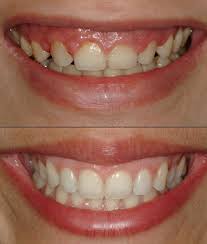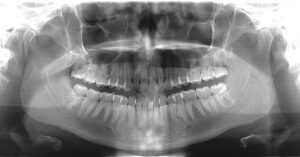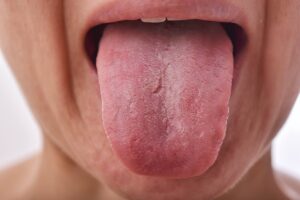Header logo
header top contact widget
Blog Archives
Recent Posts
Categories
Archives
- September 2024
- August 2024
- July 2024
- June 2024
- May 2024
- April 2024
- March 2024
- February 2024
- January 2024
- December 2023
- November 2023
- October 2023
- September 2023
- August 2023
- July 2023
- June 2023
- May 2023
- April 2023
- March 2023
- February 2023
- January 2023
- December 2022
- November 2022
- October 2022
- September 2022
- August 2022
- July 2022
- June 2022
- May 2022
- April 2022
- March 2022
- February 2022
- January 2022
- December 2021
- November 2021
- October 2021
- September 2021
- August 2021
- July 2021
- June 2021
- May 2021
- April 2021
- March 2021
- February 2021
- January 2021
- December 2020
- November 2020
- October 2020
- September 2020
- August 2020
- July 2020
- June 2020
- May 2020
- April 2020
- March 2020
- February 2020
- January 2020
- December 2019
- November 2019
- October 2019
- September 2019
- August 2019
- July 2019
- June 2019
- May 2019
- April 2019
- March 2019
- February 2019
- January 2019
- December 2018
- November 2018
- October 2018
- September 2018
- August 2018
- July 2018
- June 2018
- May 2018
- April 2018
- March 2018
- February 2018
- January 2018
- December 2017
- November 2017
- October 2017
- September 2017
- August 2017
- July 2017
- June 2017
- May 2017
- April 2017
- March 2017
- February 2017
- January 2017
- December 2016
- November 2016
- October 2016
- September 2016
- August 2016
- July 2016
- June 2016
- May 2016
- April 2016
- March 2016
- February 2016
- January 2016
- December 2015
- November 2015
- October 2015
- September 2015
- August 2015
- July 2015
- June 2015
- May 2015
- April 2015
- March 2015
- February 2015
- January 2015
- December 2014
- November 2014
- October 2014
- September 2014
- August 2014
- July 2014
- June 2014
- May 2014
- April 2014
- March 2014
- February 2014
- January 2014
- December 2013
- November 2013
- October 2013
- September 2013
- August 2013
- July 2013
- June 2013
- May 2013
- April 2013
- March 2013
- February 2013
- January 2013
- December 2012
- November 2012
- October 2012
- September 2012
- August 2012
- July 2012
- June 2012
Reshaping Gum Tissues To Protect Oral Health & Enhance Smiling Appearance
Posted on Mar 21, 2024 by William J. Claiborne, DDS MS
When people think about the appearance of their smiles, it’s typically the teeth that are the focus. Everyone wants a smile that enhances appearance, instills self-confidence and gets compliments. Yet, the appearance of a smile involves more than just teeth. The “frame” of gum tissues that arch the teeth most visible in a smile have a lot to do with how a smile looks.
As a periodontal specialist in Asheville, NC, part of my specialty involves the treatment of all stages of periodontal (gum) disease, the placement of dental implants, and the contouring of gum tissues. Gum contouring is generally done for esthetic reasons but may also be advised for oral wellness.
Gums most often pull away from the base of teeth (or “recede”), exposing darker areas of the tooth. This darker area is part of the tooth’s root and highly vulnerable to damage. Recession also causes teeth to look longer and expose darker tooth root areas of the tooth. Being sensitive to hot or cold – causing a sudden jolt of pain – is often the final warning sign that the gums are not protecting tender root segments of the tooth.
Gum recession is commonly due to:
• Gum disease, which destroys gums tissues, causing them to loosen their firm grip around the base of teeth. This enables oral bacteria to penetrate beneath the gum line, reaching vulnerable bone and tissues.
• Over-vigorous toothbrushing can wear away precious gum tissues that surround the base of teeth. When using a back-&-forth scrubbing motion, or a hard toothbrush, gum tissues can be scrubbed off. Too, using abrasive substances to brush (such as baking soda) not only wear down gum tissues, they wear away tooth enamel.
• The aging process lessens hydration in the body. Because the gum tissues are moist layers that require continual hydration (supported by saliva), oral dryness can cause the gums to draw up as they become drier. Unfortunately, this creates more challenges in maintaining healthy teeth.
While gum recession is an oral health concern, it is a cosmetic issue as well. For an attractive smile, teeth should be arched by a balanced level and shape of gum tissues. When there is too much gum tissue showing above teeth or varying heights of gums arching teeth, the height and symmetry of gum tissues can be corrected by a periodontist.
For example, in a gummy smile, too much of the gum line is visible. This makes teeth look short and draws the eye to the gums rather than the teeth. Gum tissues should complement teeth with a balanced line of gum tissues. While a gummy smile is not generally problematic for one’s oral health, many people find it makes them “hold back” on smiling fully.

Before & After Of A Gummy Smile
The procedure to correct a gummy smile is a gingival lift, also known as a gum lift or gum contouring. This in-office procedure is performed to reduce and reshape highly visible gums.
In our Western NC periodontal dental office, we use a dental laser to perform a gingival lift. Our dental laser gives a precision line while only removing specific areas of the gums, leaving all surrounding tissue unharmed. This allows us to reshape the gums to create better balance in the smile.
A laser gingival lift also offers patients a more comfortable experience since it causes very little pain and therefore requires only topical anesthesia. In addition, laser treatments result in almost no bleeding and tissues tend to heal more quickly than after traditional surgery.
We also perform gum grafting that recovers areas where gum recession has occurred. This helps to protect the tooth roots and improves the appearance of the smile.
In gum grafting, we normally take a small area of tissue from the roof of the mouth and place it in the area of recession. When there is not sufficient tissue available, a graft may be from a donor source. The graft is attached to the natural gum tissue and gently sutured into the position where it corrects a smile’s appearance and reduces further recession and the potential for gum disease.
Several teeth may be involved in gum grafting when used to even out the gum line or reduce the risk of gum and bone collapse after a tooth has been lost. In these cases, cosmetic gum surgery is beneficial in reshaping excess gum and bone tissue. It also reduces sensitivity from exposed roots to hot or cold foods.
As a periodontist, I most commonly see gums that cover too much of the teeth as being due to genetics. When gums fail to cover sufficiently over the base of teeth, it’s typically the cause of recession, which can occur from several reasons (as listed prior). Regardless of why it has occurred, our goal is to provide the patient with the most healthy and esthetic outcome in a procedure that is comfortable, successful, and requires minimal healing time.
In our Asheville periodontal dental office, we offer some of the most advanced dental technology available. In addition to amazing imaging, such as Cone Beam 3D imaging, we provide Laser-Assisted New Attachment Procedure (or LANAP). This is a cutting-edge protocol to more efficiently and effectively treat periodontitis (advanced gum disease) with the PerioLase® MVP-7™ laser. Treatment is minimally invasive and helps to minimize both discomfort and recovery time. It has also been found to stimulate bone regrowth in damaged areas.
Additionally, our office offers both oral and I.V. sedation (“twilight sleep”) for complete relaxation during treatment. Sedation is administered safely by a doctor of anesthesia to provide optimal safety and comfort.
If finances have kept you from seeking out the care you need or the beautiful smile you desire, feel free to contact our friendly staff and arrange a consultation appointment. During this time, we can discuss the best options for you, cost estimates, and predicted treatment time.
We can also review several payment plans that make treatment affordable through extended, interest-free payment periods with no down payment required. These often help our patients enjoy their confident, new smiles while making easy monthly payments that are budget friendly.
Call 828-274-9440 to schedule.
How A Periodontist Can Help Cancer Patients
Posted on Mar 18, 2024 by William J. Claiborne, DDS MS




